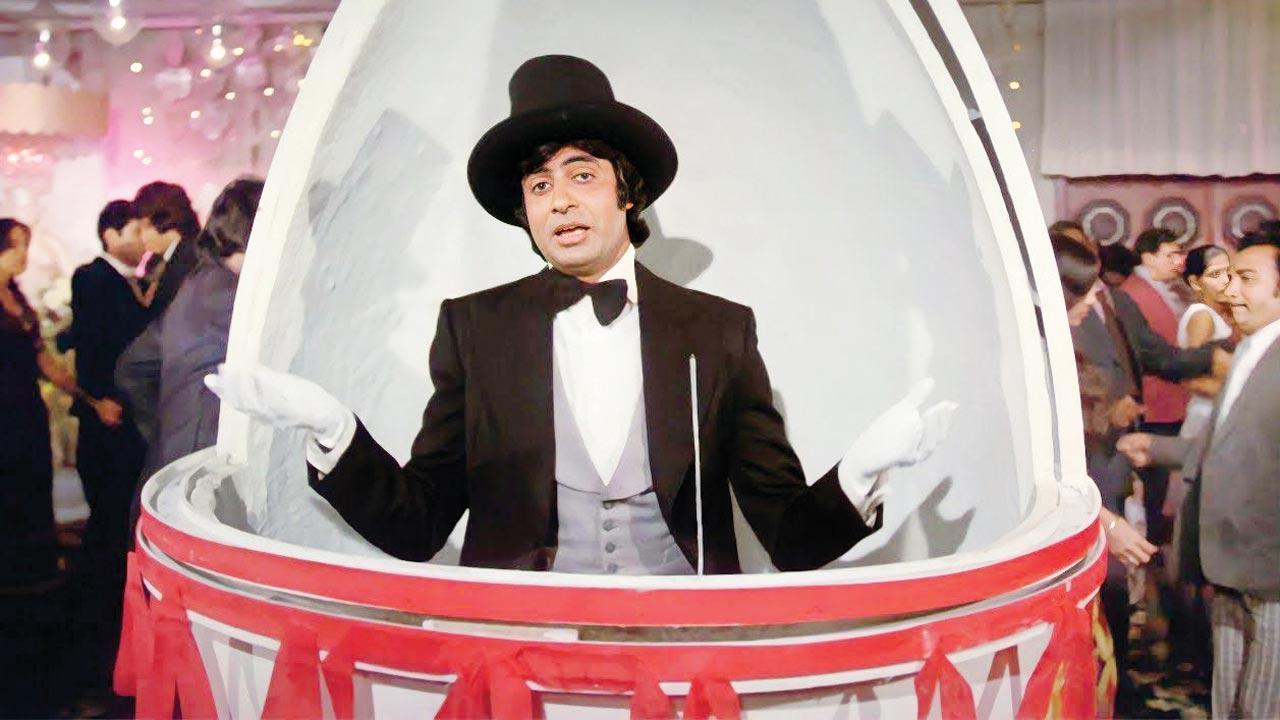Of Mumbai moods and melodies
Updated On: 30 July, 2023 06:05 AM IST | Mumbai | Meher Marfatia
Engaging stories surround Hindi film hits and other evocative songs in diverse Bombay locales

Amitabh Bachchan’s Anthony Gonsalves character was based on a bootlegger Manmohan Desai knew in his younger years in Khetwadi
 Mapping neighbourhoods can prove as much an emotional ride as it is a factual quest. If, of course, one chooses to let it. Among the many joys that research for these pages brings are anecdotal accounts of movie scores seeded in a particular place or from a specific situation. The circumstances, fortuitous or otherwise, inspiring a lyric or music sheet. Here are some stories mirroring the moods behind popular melodies, the kind of rigour they required and adulation they stirred.
Mapping neighbourhoods can prove as much an emotional ride as it is a factual quest. If, of course, one chooses to let it. Among the many joys that research for these pages brings are anecdotal accounts of movie scores seeded in a particular place or from a specific situation. The circumstances, fortuitous or otherwise, inspiring a lyric or music sheet. Here are some stories mirroring the moods behind popular melodies, the kind of rigour they required and adulation they stirred.
While profiling the Mehta family’s trio of Marine Drive buildings—Zaver Mahal, Kapur Mahal and Keval Mahal—I discovered an interesting angle to the lilting tune of “Tadbeer se bigdi hui taqdeer bana le”, from Navketan’s 1951 thriller, Baazi. SD Burman and his son RD Burman lived briefly at Zaver Mahal before shifting to Sea Green Hotel till their Bandra bungalow was ready. Tapping out the ghazal-turned-jazz beat in this home, an excited SD asked Guru Dutt, who is supposed to have fallen for singer Geeta Roy while she recorded this song, to come and hear his arrangement. Its second line, “Apne pe bharosa hai toh ek daao laga le (If you believe in yourself, take a chance)”, with which guitar-strumming Geeta Bali tempts a shy Dev Anand, seemed to echo the plucky spirit of the Mehta patriarchs whose rags to riches adventures have been narrated on these pages.
 Dev Anand singing “Khoya khoya chand...” in Kala Bazar, 1960. The legendary lyricist Shailendra was suddenly inspired to write this SD Burman-scored hit on a full moon night on Juhu beach. File pic
Dev Anand singing “Khoya khoya chand...” in Kala Bazar, 1960. The legendary lyricist Shailendra was suddenly inspired to write this SD Burman-scored hit on a full moon night on Juhu beach. File pic



